Kichen Backsplash: Wall Covering or Same Material as the Countertop?
The backsplash is an important item to plan in your kitchen. Not only it protects the wall over the countertop against moisture and grease, the material choice can also have great impact in the kitchen decor.
The enormous variety of options for every finishing item allows you to make endless combinations and will surely result in a kitchen that looks like no other. However, so many beautiful options make it hard to choose a favorite, right?
Should the backsplash be made with the same material as the countertop? Or with any other wall covering?
The fact is both options are totally possible and can make gorgeous kitchens, so the best way to decide is taking a good look at some of them and finding out which style you prefer.
My only reccommendation is that you pick just one material for the backsplash. Some kitchens have a short backsplash in the same material as the countertop, plus a tile on top of that, which I don’t think looks good, but you can see for yourself in the photos below.

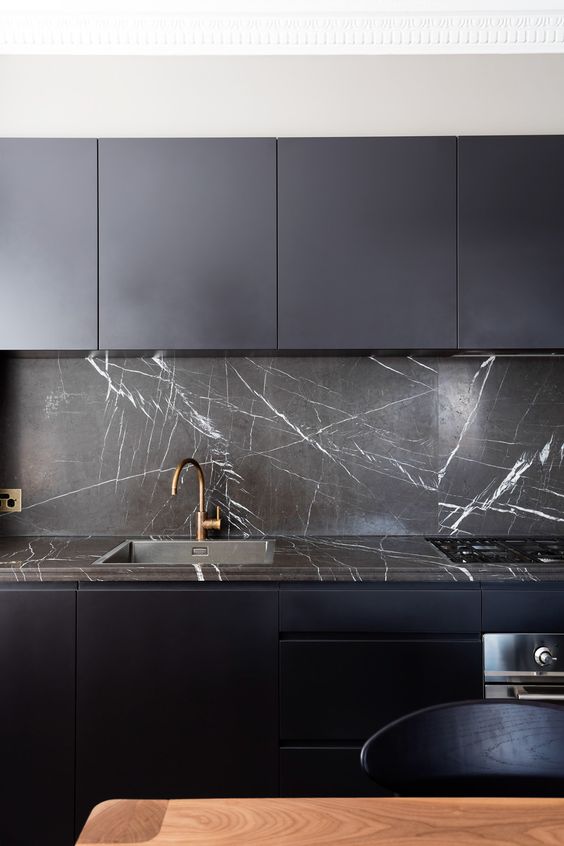
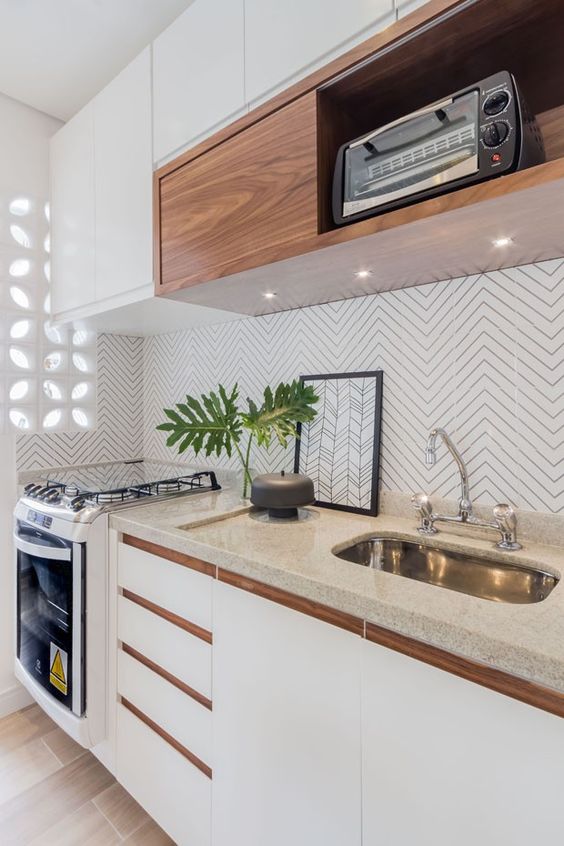

Don’t you agree that it looks cleaner with only one material on the wall?
Also consider that having two different materials is more expensive.
In addition, in case of a short backsplash in the same material of the countertop and paint on the rest of the wall, you don’t get enough protection, unless it’s a proper type of paint.
Ok, now let’s see what’s best for your kitchen backsplash: same material as the countertop or a different one.
Page Contents:
Kitchens with the same material for countertop and backsplash
Using the same material can make organized, minimalist kitchens.
They are usually kitchens with a limited and neutral color palette.
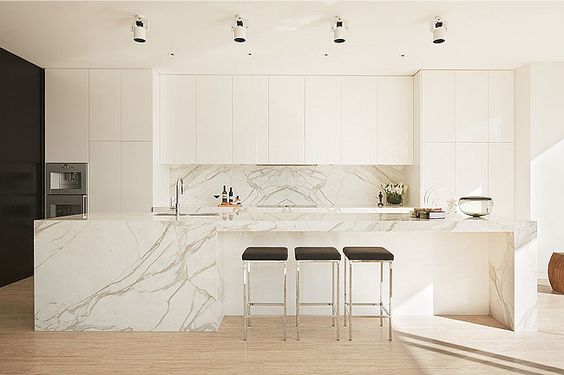
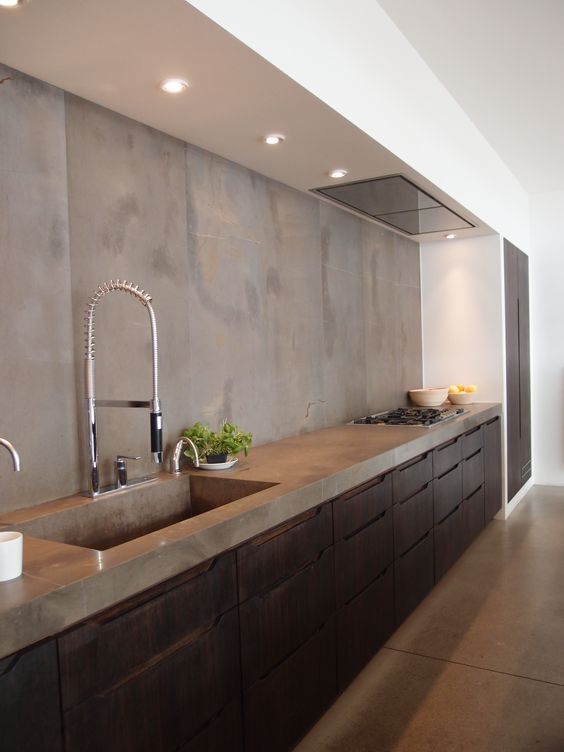
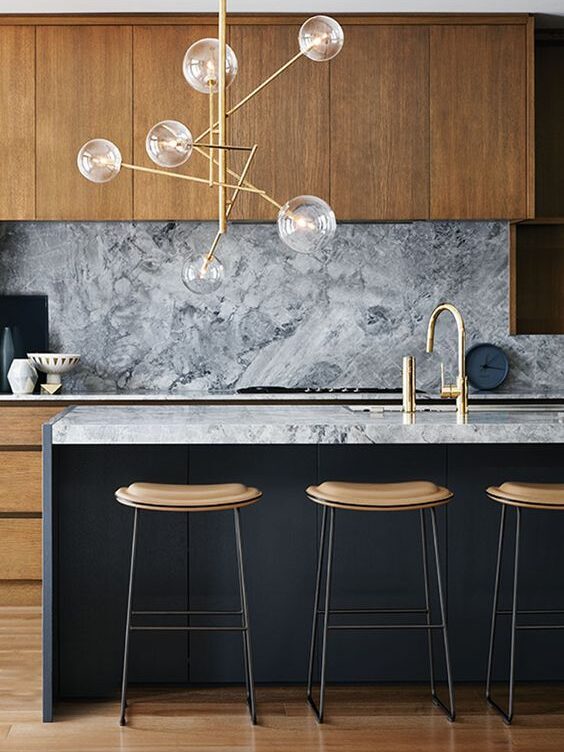
The kitchens above look as organized as possible. Not only few materials and colors were used, but also all the storage is made in closed cabinets. Nothing is exposed except featured decorative items.
The examples you’ll see below also have a neutral collor palette, but the use of open shelves don’t make the kitchens look minimalist, even though the materials used do, due to the exposed objects and utensils.

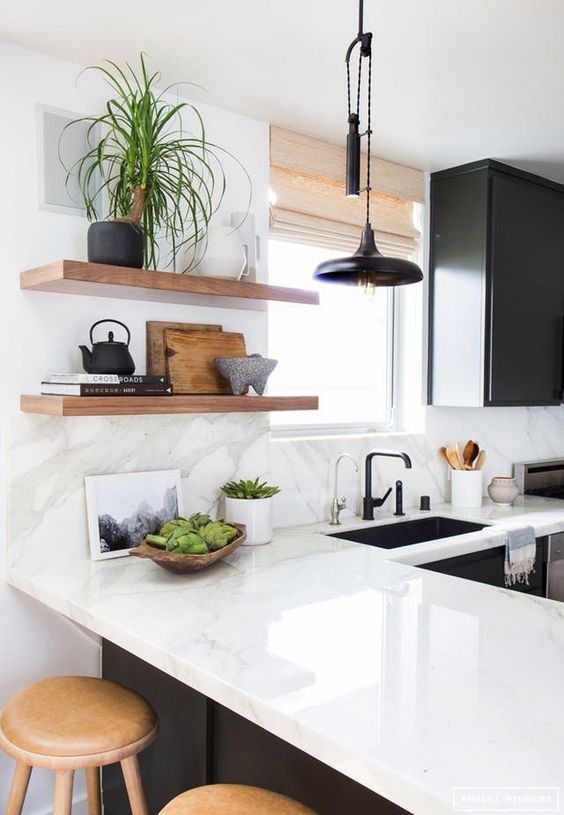


But neutral colors are not a rule for kitchens with the same material on countertop and backsplash.
You can perfectly have a neutral color on your countertop and backsplash, but a vibrant one on floors or cabinets, for example. Or even a vibrant material for countertop and backsplash too.
The kitchens below have vibrant colors or patterns on everything. In cases like these, keeping the same material for countertop and backsplash and storing objects in cabinets, not exposed on shelves, are good strategies so you don’t have too much visual information.
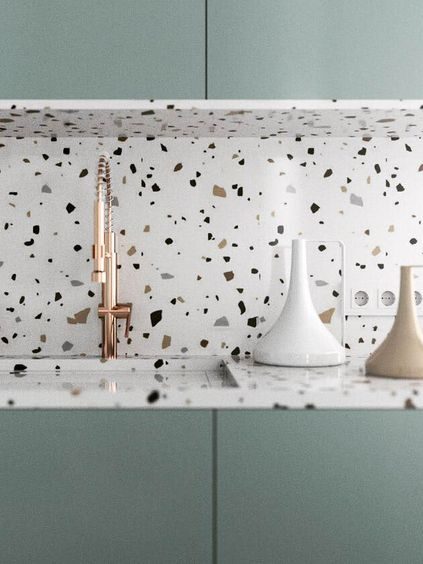

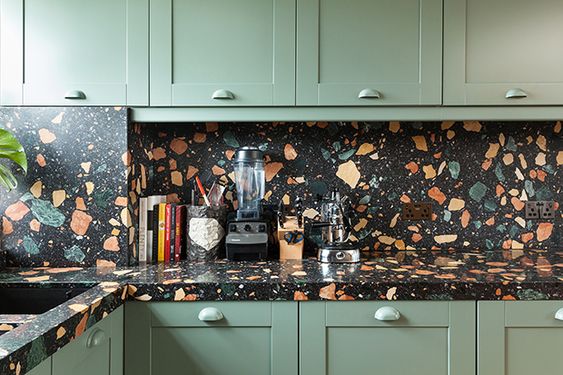
Kitchens with two different materials for countertop and backsplash
The biggest pro of this option is the price.
A countertop needs a resistent material, as it needs to support weight. This is not the case for a wall covering. It only needs to be waterproof and look nice.
So if you opt for the countertop material for the wall as well, you are paying extra for a more resistent, thicker material, which you don’t actually need on the wall.
Instead, you can just have a tile or any waterproof material.
Another pro is the bigger variety of formats, colors and patterns. If you want a striking wall above the countertop, tiles will offer you way more possibilities than your countertop material.

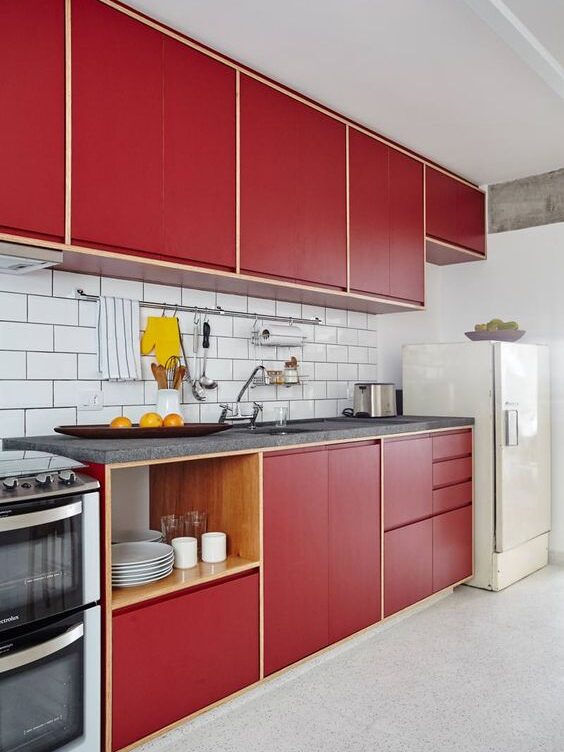
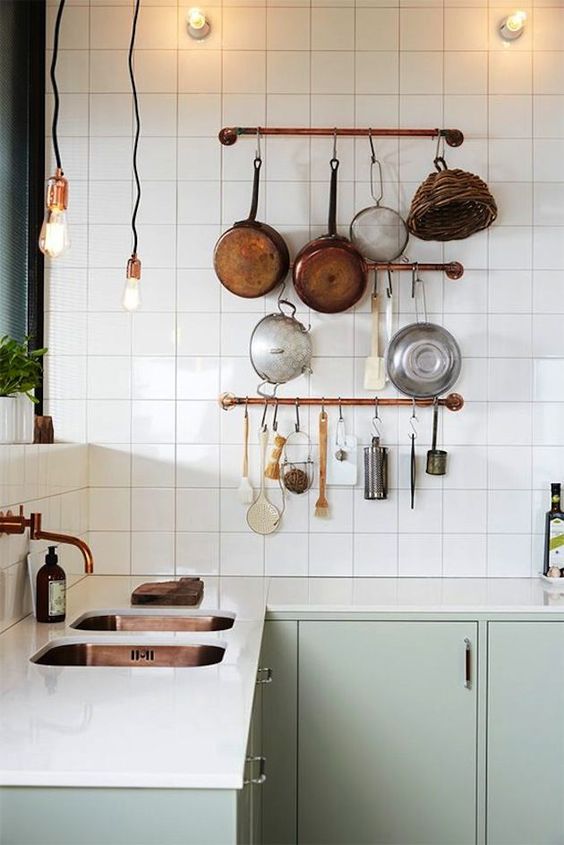
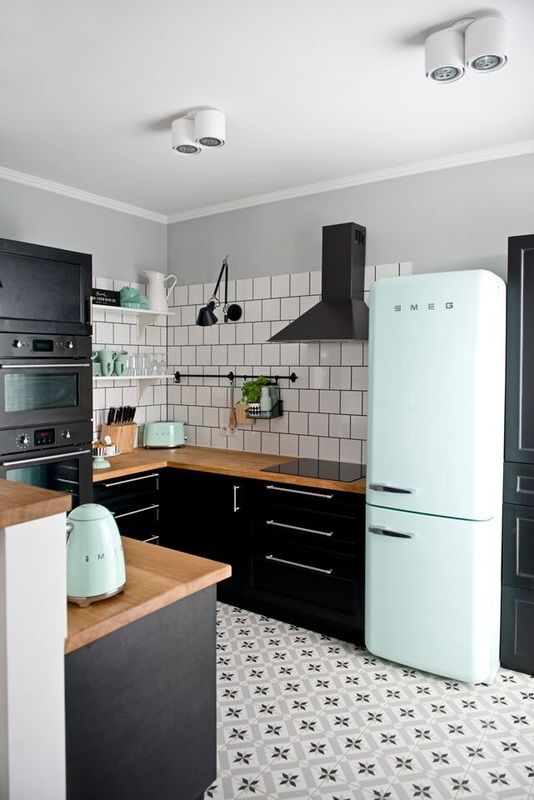
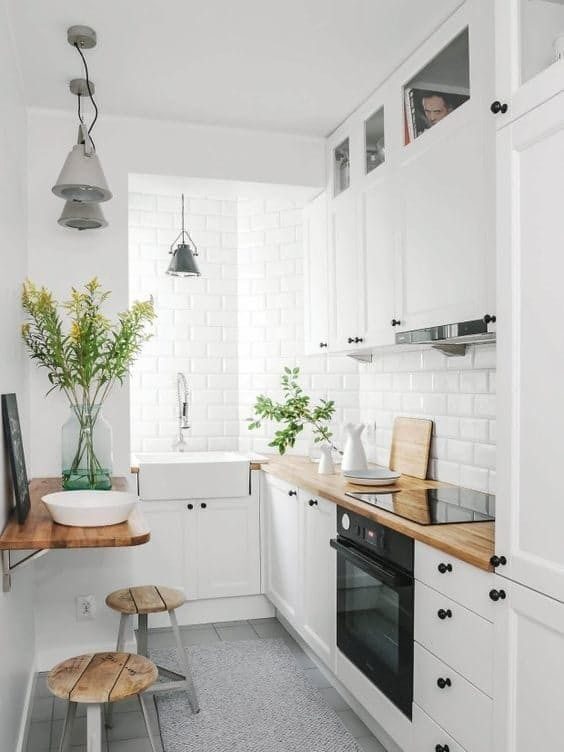




So, do you know your favorite option already?
If you want the backsplash in the same material as the countertop, read about kitchen countertop materials here.
If you prefer different materials, click here to read about types of tiles and here to see other options of wall finishes for kitchens.
In either case, find out which area of your kitchen walls should be covered here.
